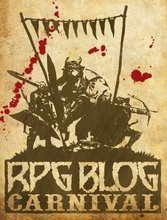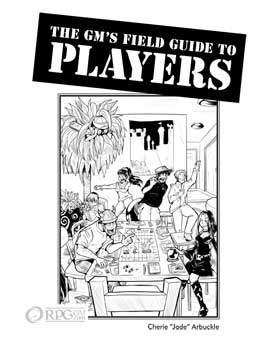Game conventions can be a great way to stretch your GMing muscles, but running a convention game is very different from running even a one-shot at home with your regular gaming group. You never know who (or what) is going to end up at your table and you’re running within a limited time frame, frequently 4 hours. This can be intimidation to a first-time con GM. Here’s a list of tips that will (hopefully) make your game go more smoothly:
- Give the PC’s a clear, concrete goal. This may seem obvious, but I’ve played in convention games where the PCs had no clear idea of what they were supposed to accomplish. The ultimate one was an In Nomine game where the challenge was “Chicago. Trouble. Go fix.” Literally. That was our entire mission briefing. It left me feeling frustrated and aimless through much of the game.
- If you don’t state the goal at the very beginning, make it clear as soon as possible. The classic con scenario is the “mission” scenario, where the PCs are given clear mission goals by a superior in whatever organization they belong to. This is a great way to begin a con game. If you don’t want to go that route, you can have the goal find the PCs, but make sure it happens within the first 30 mins of game time. An example of the mission finding the PCs: I ran a Trinity game where the PCs were all traveling to new jobs on Luna. That was just a device to get the PCs on the same ship; the real game began when a group of NPCs hijacked the shuttle and the PCs had to capture them while protecting the shuttle’s crew and passengers.
- Consider running a “closed-room” scenario. A “closed-room” or “locked room” scenario is one what takes place inside a very limited area which the character, for some reason intrinisc to the plot, can’t leave until the goal has been accomplished. You see this most often in murder mysteries and, indeed, my first successful con games were murder mysteries. Yes, it’s contrived. Yes, it can be constricting. But it makes it much easier to run a scenario when you know the PCs aren’t going to suddenly take a train to Borneo.
- Give your game an intriguing title. That will help it stand out from the mass of other games in the con catalog. You want your title to intrigue players into finding out more about your game. Some titles I’ve used:
- Things that Go Bump in the Night (an Everway game)
- Crimes Against the State (an Amber Diceless game)
- Every Now and Then (a Mage: Technocracy game)
- (After)Life is a Caberat (a Wraith: the Oblivion game)
- Advertise your games, particularly if you’re a brand-new con GM. Frequently cons have boards where you can tack up game notices. If you’re lucky, you’ll be able to put up posters in other places at the con venue, such as lobby pillars — always get permission to put these up first! I like to use 8 1/2 x 11 fliers with an eye-catching picture, the name of the scenario, the name of the rules system (including edition!), the time of the game, the location of the game (if you know), the name of the GM, and a brief description of the scenario designed to pique players’ interests.
- Take time to explain. Many, many players come to cons to try out games they’ve never played before. So you may have someone at your table who’s never played any RPGs or someone who’s been gaming since Chainmail was new. Take the first part of your time slot to do a quick run-down of the game, its mechanics, its background and the characters involved. For a four-hour game slot, I reserve the first hour for explanations
- Time your game. It’s extremely rude to run over. If you run too far over, your players will miss their next game. I usually aim my games to run one hour less than the available time. That gives me some leeway to deal with plot derailments, lost players, etc.
- Use pre-generated characters. Unless you’re running an extremely simple set of mechanics, you’re not going to have time to create characters and play the scenario. And if it’s a new game to a player, most likely they don’t know what they want to play. Also, having pre-generated characters means you can tie them to your plot and to each other. They’re known quantitites, you can plan the scenario around them.
- Consider creating player handouts. Along with a copy of the character sheet, I give out a character history/background, a one-page explanation of the game, another 1-2 pages of “cheat sheet” for mechanics, and brief summary of any important background information the player will need to know for the scenario. Don’t bog them down with details or mechanics that aren’t crucial for that session. Important: don’t photocopy the books unless you have specific permission! This is plagerism. I give my players “crib notes” — something they can refer to during the game, but is basically useless without the rest of the rules.
This post is part of the RPG Blogger‘s August Blog Carnival.






